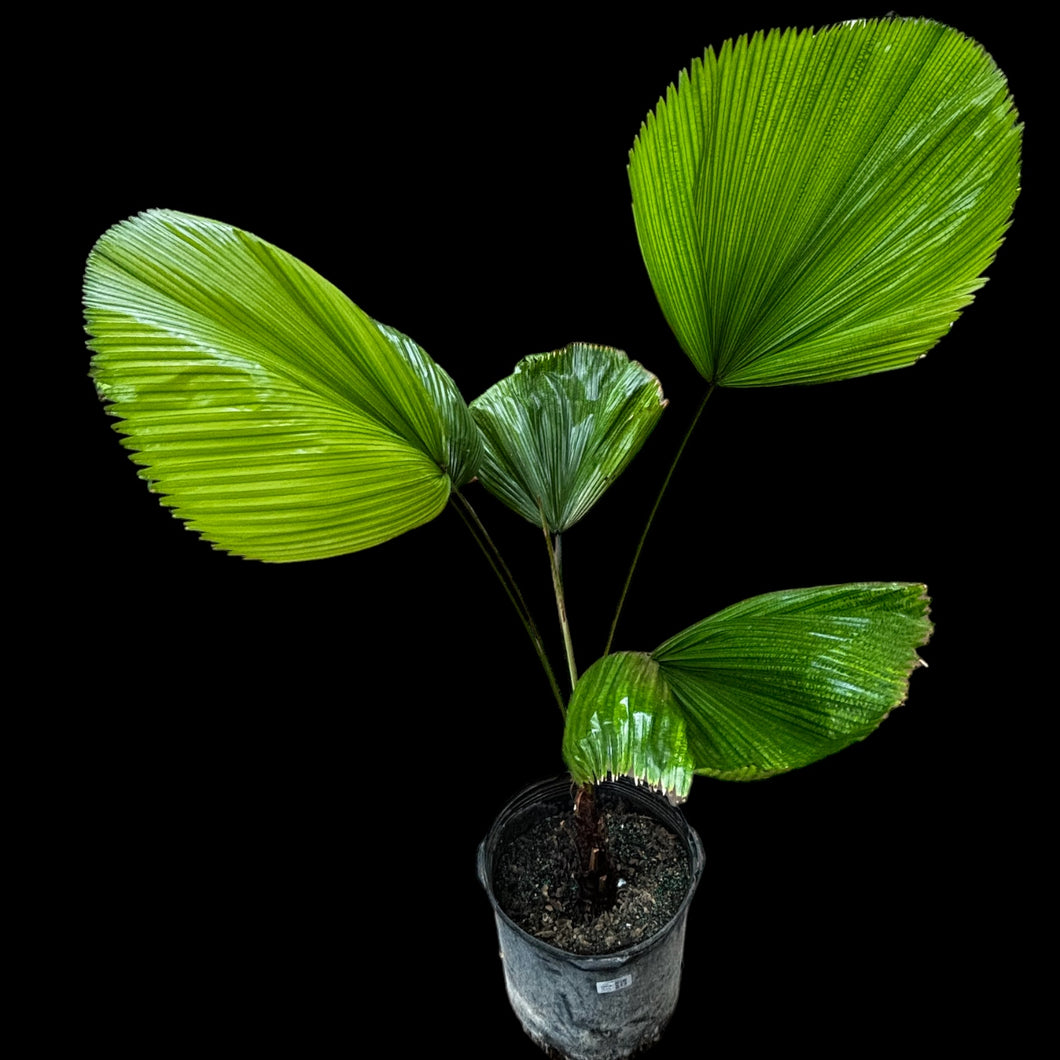
Licuala Grandis
Regular price
$ 199.99
Sale
AVAILABLE FOR PICKUP OR LOCAL DELIVERY ONLY.
PALM CARE:
To talk about Palms, and Palm trees, and the differences between the over 200 genera and 2600+ species, is very scientific, and unnecessary for this care guide, however, there are differences among many groups of Palms. Most palms are recognized by their large, compound leaves, referred to as fronds, sitting atop a woody, unbranched "trunk", however there is an vast diversity in physical characteristics among palms, both in the wild and in common retail cultivation. With so many types, and looks, and species, palms can be found from rainforests to deserts and everywhere in-between. Majesty palms are among the most popular, and typically don't have the 'trunk', but instead, a grouping of large, lush fronds that emerge from a thick center.
Most palms prefer bright indirect sunlight, maybe with a few hours of direct sunshine throughout the day. Some can adapt and acclimate to higher light levels, even full sun. Many of our clients use palms to decorate their patios and poolsides every Spring and Summer to bring a tropical feel to their yards. Depending on your lighting situation and the application you are looking to use palms for, we can help you choose the correct varieties, or individual plants, as we work with growers that grow in both full sun, and shaded.
Neanthe bella palm, or Parlour Palm, is one of the most frequently purchased palms in the houseplant world. It prefers shade to bright indirect light and only grows to 10' in height, over many years.
Some great examples of "Full Sun" palms would be: Spindle, Triangle, Bottle, Bismarkia, Washingtonia and other fan leaf palms and Adonadia palms.
Fishtail, Majesty, Areca, Foxtail, Cat and Bamboo palms are generally suited for more shaded environments, but can be slowly acclimated to higher light situations.
The majority of palms like to remain evenly moist at all times. They tend to be pretty thirsty plants, but do not want to be soggy, or remain in a pool of water. Checking the soil on your palm every 3-4 days is good practice until you figure out your watering schedule. If the top inch or 2 of the soil is dry, it is time to give your palm a drink. Because they do not like to sit in murky, stagnant water, planters with drainage are preferred to allow excess water to escape.
If you are using your palms outdoors in the Summer months, check and water your palms daily, as they will dry out much faster
While it is not completely necessary, you can use a general purpose, or palm specific, high quality fertilizer from Spring through Fall. We recommend diluting the fertilizer to about 50% strength. Fish Head Farms soil conditioner is a great option to use year round to provide essential nutrients and promote strong, healthy growth.
Palms do well in a number of different potting mixes. A general purpose, all natural commercial mix is usually fine. We like to add in chunky perlite or vermiculite to our mixes to allow for more air flow and better drainage. Just keep in mind that the fast the soil drains, the more you are going to have to water.
Our palms are typically in a pot size that is appropriate for them for a while. We only recommend repotting your palm every year or 2, and even then, you only want to move up 2" or so in pot sizes to reduce stress. This should be done in the Spring or early Summer months. If you have just recently purchased your plant, do not repot it for at least 6 months.
The most common pest issues for palms are Mealy Bugs and Red Spider Mites, however, even Scale Bugs can cause issues. It is always best practice to isolate any new plants you bring in to your home for a few weeks to watch for little pests. For help and tips on prevention and treatment of pests, see our At Home Pest Recipes here!
If you have any more questions, or need further assistance, please feel free to give us a call or shoot us an email!
